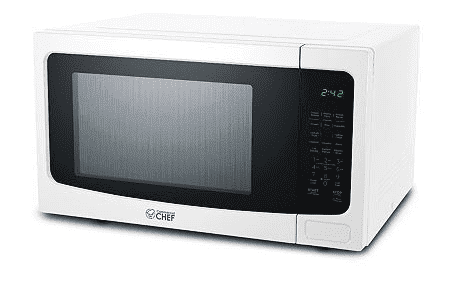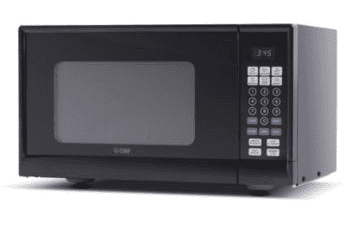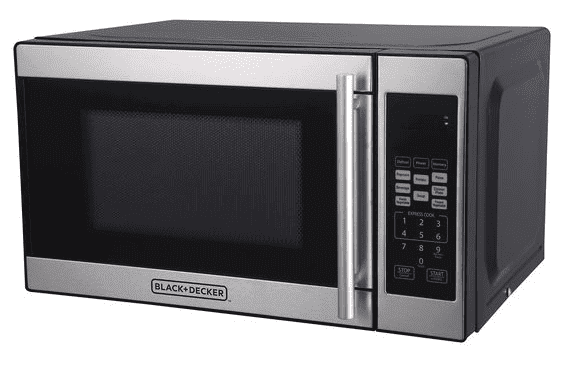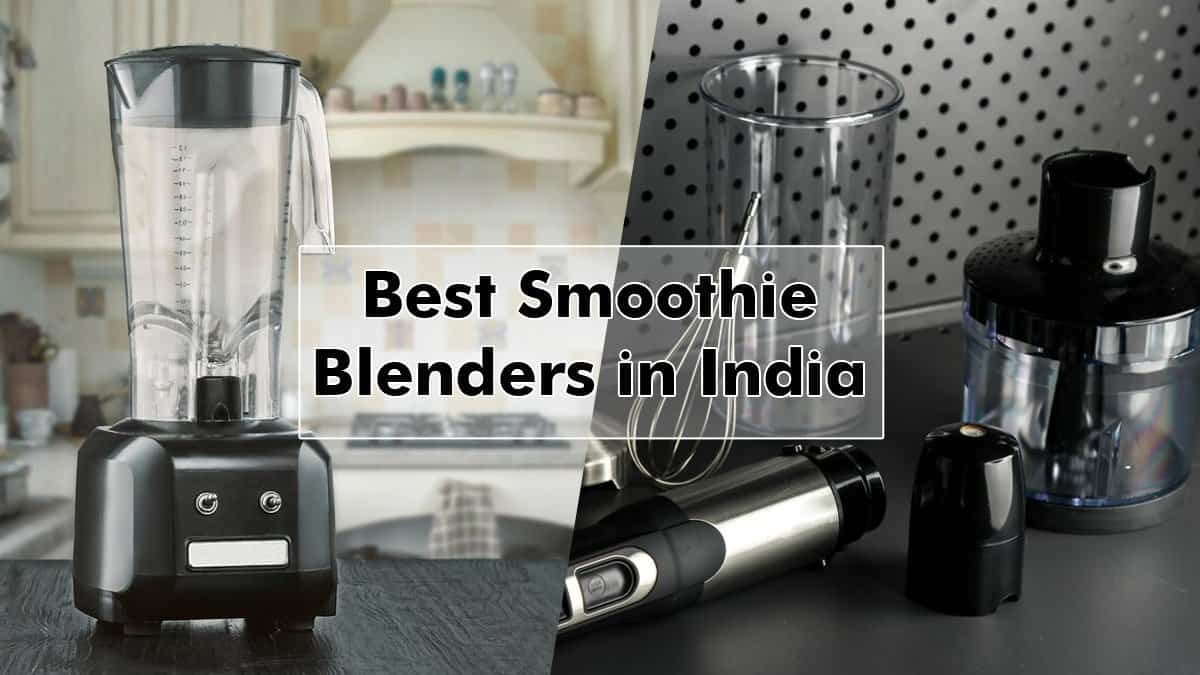In a world that thrives on convenience, the allure of advantages and disadvantages of microwave ovens is undeniable. Rapid cooking times paired with user-friendly interfaces make microwaves a modern kitchen mainstay. But is everything in this radiating box truly golden?
Dive deep with us as we unearth both the boon and the bane of this ubiquitous appliance. The voyage promises a melange of culinary chemistry, nuanced nutrition understanding, and some surprising revelations. Whether you’re a time-strapped professional eyeing a quick meal or a health enthusiast deliberating on nutrient preservation, the spectrum of advantages and disadvantages surrounding microwave ovens is vast and varied.
Prepared to be enlightened? Let this exploration guide your next kitchen decision as we delve into the intricate balance of convenience versus concerns. The choice is yours to make, armed with informed insights.
Table of Contents
Advantages Of Microwave Oven

Microwave ovens have become a ubiquitous fixture in modern kitchens and for good reason. Their primary selling points revolve around ease of use and convenience, making them indispensable appliances for busy households and individuals on the go. Beyond their compact size and precise settings, microwave ovens offer many benefits that cater to a wide range of cooking needs. In this comprehensive exploration, we delve into the numerous advantages of microwave cooking, emphasising its quick heating and reheating capabilities, precise cooking programs, easy cleaning, defrosting abilities, safety for children, variable heat settings, energy efficiency, and preservation of taste and nutrition.
1. Quick Heating/Reheating

Perhaps the most significant advantage of microwave ovens lies in their ability to heat packaged food and reheat leftovers quickly. The magic behind this efficiency lies in the magnetron, a component that generates radio waves. These radio waves penetrate the food and directly transfer heat energy to its molecules. As the turntable rotates, ensuring even exposure, the molecules within the food or liquid vibrate rapidly, leading to swift and uniform heating.
Moreover, microwave ovens are environmentally friendly, as they don’t emit harmful emissions into the air like conventional ovens. The rapid heating allows for the preparation of various dishes, from Haldiram Style Moong Dal to Kale Chips and even elaborate dishes like Paradise Style Biryani and Khichdi.
2. Precise Cooking Programs

Modern microwave ovens come equipped with preloaded cooking programs, simplifying meal preparation further. Users can effortlessly choose from a wide array of preloaded recipes and set the timer accordingly. This set-and-forget approach allows individuals to multitask while their food cooks in the microwave. For instance, you can select the timer for a bowl of soup, walk away, and return to a perfectly cooked meal, eliminating the need for constant supervision and stirring to prevent burning, as required with conventional stovetop cooking.
3. Easy to Clean

Microwave ovens offer easy cleaning, both for the cooking cavity and the utensils used. The rapid and contained cooking process might lead to splatters, especially when preparing soups or other liquid-based dishes. However, cleaning after each use is a practical solution to maintaining a hygienic microwave. The smooth, glass-made interior facilitates effortless cleaning, with a damp towel usually sufficient to wipe away any spills or splatters.
4. Efficient Defrosting

Another remarkable benefit of using a microwave over a traditional oven is its defrosting capabilities. Microwaves can defrost frozen food rapidly while retaining its flavour and texture. The defrost option allows users to place frozen items in the microwave and carry on with other tasks. When they finish their chores, the food is defrosted and ready for preparation, eliminating the need to wait hours for it to thaw naturally.
Newer microwave models offer dual defrost functions, enabling users to defrost food based on either weight input or timer settings, adding to the convenience and precision of microwave cooking.
5. Safe for Children

Microwave ovens are safer for children than traditional ovens or gas stoves. Unlike these alternatives, which emit significant amounts of smoke and heat, microwaves generate minimal smoke and heat during operation. The controlled cooking process ensures that microwave cooking is child-safe, as it does not expose young ones to high temperatures that could lead to burns or scalding accidents.
Additionally, some microwave oven models feature touch control panels, making them accessible and user-friendly for children of sufficient age.
6. Variable Heat Settings

Modern microwave ovens boast various capabilities, including different heat settings. Users can customise cooking times and power levels to suit the specific requirements of their dishes. Once the timer is set, the microwave takes care of the rest, cooking the food precisely as desired. When the cooking cycle completes, the microwave emits a signal, indicating that the meal is ready to be enjoyed.
7. Low Energy Consumption

Microwave cooking not only saves time but also money on energy bills. Compared to conventional ovens, microwave ovens consume less energy. The wattage of microwave ovens typically ranges from 600 to 1200 watts, and some models even allow for automatic on-and-off settings, turning off when the cooking time and temperature reach the desired levels. This energy efficiency adds to the appeal of microwave cooking as a sustainable and cost-effective option.
8. Preserving Taste and Nutrition

Contrary to the misconception that microwave cooking may compromise food taste and nutritional value, microwave ovens preserve both. Thanks to their quick-cooking process, food doesn’t burn, ensuring that flavours and nutrients remain intact. As a result, dishes prepared in microwave ovens boast the same taste and nutritional value as those cooked using traditional methods.
Disadvantages Of Microwave Oven

Microwave ovens have become indispensable in modern kitchens, offering unparalleled convenience and speed when cooking and reheating food. However, like any other appliance, microwaves are not without their drawbacks.
1. Makes Food Dry

One of the primary issues with microwave cooking is the potential to overcook and dry out certain foods due to the high heat intensity. Microwaves reduce the water content of the food, leading to the undesired outcome of dry, unpalatable meals. To avoid this, it is essential to employ logical cooking times and heat settings.
To retain moisture in your food, ensure that there is a sufficient amount of water present before cooking. Begin with shorter cooking periods and check the food after each interval to identify the ideal cooking times and temperatures for various dishes.
2. Soggy Textures and Limited Crispiness

Conversely, cooking food for an extended time in the microwave can result in soggy textures. Unlike conventional ovens or air fryers that achieve crispiness through different mechanisms, microwaves heat food with highly energetic electromagnetic waves. This causes the water molecules in the food to move, generating heat that warms the food or drink.
The moisture from this process cannot escape the confined space of the microwave, leading to condensation within the food and making it soggy. To counteract this issue, it is advisable to cook in short bursts and check on the food regularly to achieve the desired texture.
3. Lack of Versatility

While microwave ovens are known for their speed and convenience, they have limitations in terms of versatility. Unlike traditional ovens, microwaves cannot effectively bake, roast, or fry foods. Preparing items like chapattis and rotis is also challenging in a microwave.
Baking, in particular, presents a significant challenge as microwaves cannot produce the browning and crisping effects typically associated with oven-baked dishes. Although convection microwaves offer more cooking possibilities than solo models, they still do not replicate the exact results of an oven. This limitation might disappoint consumers seeking alternatives for frying.
4. Need Microwave Safe Cookware

When using a microwave for cooking, you must be mindful of your cookware or containers. Opt for microwave-safe bowls and dishes specifically designed for this purpose. Using improper materials in the microwave can be hazardous, as certain plastics may release toxic compounds when exposed to high heat.
Microwave-safe cookware is usually made of glass, ceramic, or specific types of plastic that can withstand microwave energy without leaching harmful substances into the food. For example, Tupperware offers excellent microwave-safe containers. Always check the manufacturer’s instructions to ensure your cookware is safe for microwave use.
5. Potential for Food Poisoning

Microwave ovens can occasionally lead to severe cases of food poisoning. This risk arises due to the presence of hot and cold spots in the food caused by the standing wave pattern within the microwave. As microwaves can only penetrate about 1.5 inches into the food, uneven cooking can occur.
To minimise this risk, it is essential to maintain consistency in the food’s shape and size. Stirring or rotating the food during cooking can also help ensure more even heat distribution.
Top Five Microwave Ovens
- Panasonic Microwave NN-ST26JMFDG Silver
- Samsung Convection Microwave MC28A5013AK-TL
- IFB 25 L Solo Microwave Oven (25PM2S, Silver)
- Samsung Convection Microwave CE1041DSB3-TL
- Haier 20L Solo Microwave Oven (HIL2001MWPH, Black)
Also Read
- Microwave Oven – Features and Types
- 21 Kitchen Appliances Name Vocabulary in English
- What Sets Them Apart? : Comparing Difference Between Food Processor and Mixer Grinder
Conclusion
Microwave ovens are a staple in more than 75% of households and are widely employed in commercial kitchens for their quick cooking capabilities. Nevertheless, it is crucial to note that their frequent use without proper maintenance could lead to potential health risks. Awareness of the downsides is essential when incorporating this convenient appliance into your kitchen. Despite the numerous advantages, there are indeed some disadvantages to microwaves. Ensuring proper care and following safety guidelines will help mitigate these risks, ensuring you can continue enjoying the efficiency and convenience of microwave cooking while prioritising your well-being.
Frequently Asked Questions
What are the primary advantages of using a microwave oven?
Microwaves swiftly heat and reheat with magnetron tech. They simplify cooking via preset programs, boast easy cleaning with glass interior, and efficiently defrost while retaining quality.
Are microwave ovens safe for children to use?
Yes, microwave ovens are safer for children than traditional ovens or gas stoves. They emit minimal smoke and heat during operation, reducing the risk of burns or scalding accidents. Some microwave models even feature touch control panels, making them accessible and user-friendly for children of sufficient age.
Can microwave cooking compromise the taste and nutritional value of food?
No, microwave cooking does not compromise food’s taste and nutritional value. Contrary to common misconceptions, microwave ovens preserve flavours and nutrients because of their quick-cooking process, which prevents food from burning and retains its nutritional content.
What are the limitations of microwave ovens?
Microwave ovens, while convenient, have drawbacks. They can overcook and dry certain foods due to high heat intensity. Browning and crispiness, crucial in baking, are lacking. They’re limited for roasting and frying too. Using microwave-safe containers is vital to avoid health risks associated with improper cookware.





